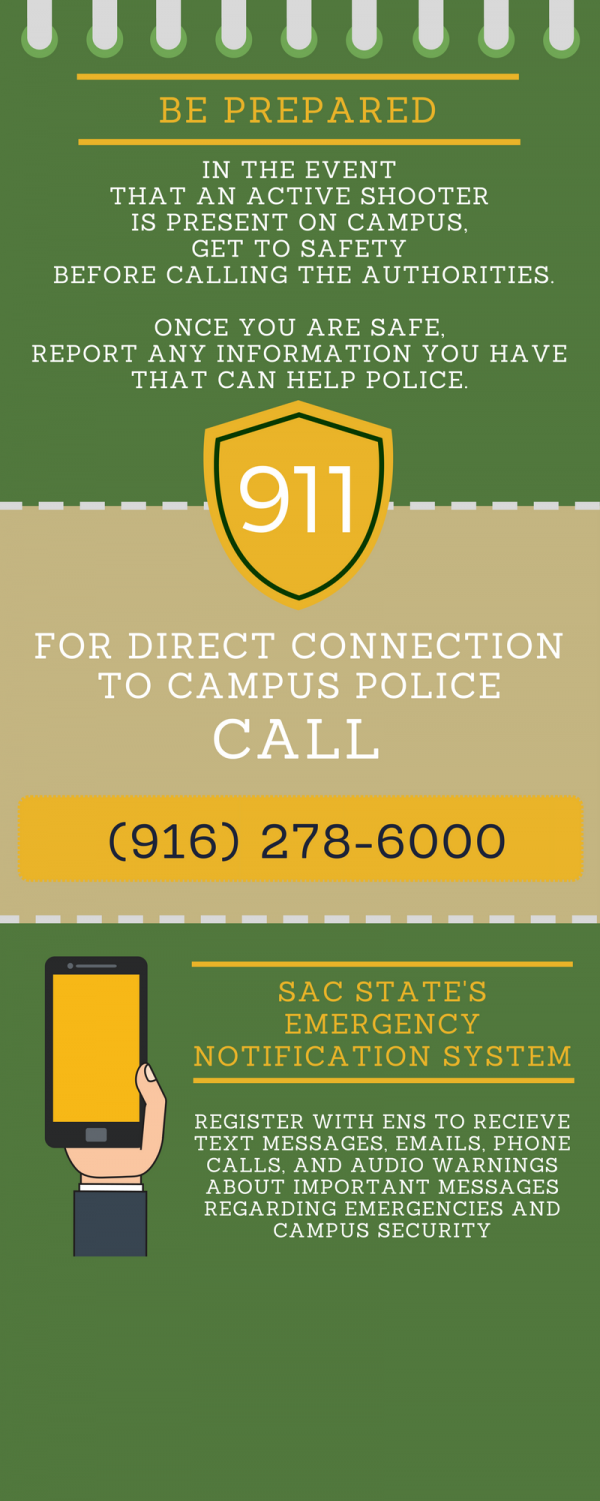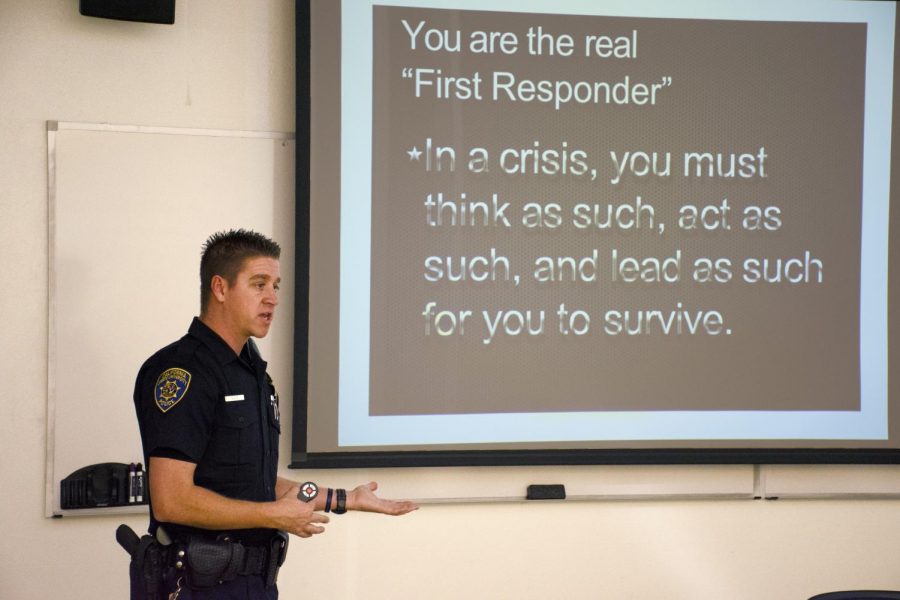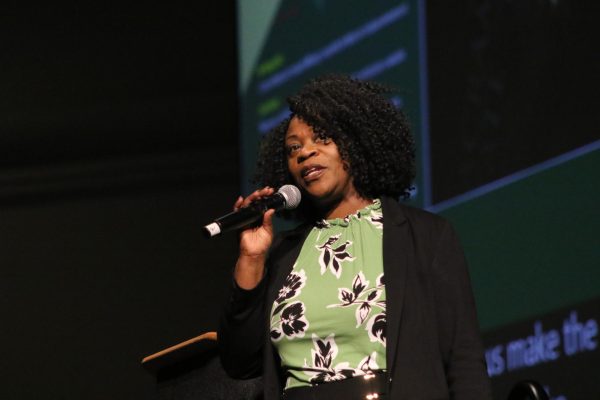Safety concerns lead to campus security updates
John Nelmar - The State Hornet
Community Outreach Officer Nathan Rice conducts an active shooter training in Eureka Hall on March 9, 2018. Active shooter trainings are being offered in response to an increase of school shootings.
The Sacramento State Police Department is trying to ease safety concerns by offering students education about how to react to threats on campus, according to Police Chief Mark Iwasa.
There have been 28 incidents of guns being discharged on school campuses since the year’s start, according to everytownresearch.org.
Sac State’s emergency preparedness policy has been modernized to account for the turnover rate of students, Iwasa said.
What used to be a series of time-consuming seminars on different disaster scenarios has been streamlined by Iwasa into a program based around two things: evacuation and shelter-in-place.
Instructional videos
“If you become proficient at how to evacuate, if you become proficient at how to shelter-in-place, you will be prepared for most disasters,” Iwasa said.
Iwasa has been at Sac State for more than six years and was with the Sacramento County Sheriff’s department for 28 years.
The department’s website provides instructional videos and Iwasa said it will be adding a California State University video on active shooter response.
Story continues below
This video will serve as a resource for students who are unaware Sac State had policies in place for dealing with an active shooter.
Jonathan Carmichael, a senior and public relations major, is one of those students.
“I think most students would go into survival mode,” Carmichael said. “Info or a drill on what to do if something like that did happen would help.”
Student interns: the ‘eyes and ears’ of the department
There are about 80 community service officers, all student interns, Iwasa said. They perform many duties, which include maintaining a visual presence and being the “eyes and ears” of the police department, according to its website.
Iwasa said that he is most proud of the patrol teams’ effectiveness in preventing crime rather than waiting to respond to it.
“There’s not a mom or dad around that are going to be very satisfied that we got to a crime scene quickly,” Iwasa said. “The fact that we let it happen to their son or daughter at all is a failure as far as they are concerned, and that’s how we see it as well.”
Julissa Moreno, a junior and communication studies major, was not aware of campus policy on active shooters and is concerned about officer visibility and training.
“I believe that it’s good to have the police department on campus,” Moreno said. “But I feel like the (community service officers) that we do have just walk around or ride around in the go-carts and it’s like what training are they getting?”

Moreno said community patrol officers become less visible at night and rarely sees them anywhere but around the Academic Information Resource Center.
Safety improvements
One area where Iwasa is looking to improve safety is retrofitting classrooms to easily lock doors locally.
This semester the department is testing a new product that would allow doors to be locked based on a timer set to scheduled classes and which would allow for easy use locally, in an emergency.
Iwasa said that doors being able to be locked from behind would be a good improvement because virtually every classroom door opens outward and can only be locked from the outside. Doors that open out cannot be barricaded and offer little protection if they cannot be secured.
Contacting campus police
The police department has annual informal discussions of simulated scenarios with emergency operations personnel throughout the campus.
They also do annual fire and evacuation drills with building coordinators and other vital personnel in every building on campus.
In the event that an active shooter is present on campus, Iwasa says it is important for students to get to safety before calling the authorities. Once you are safe, report any information you have that can help police.
Calling 911 from any campus phone will connect you to the campus police department.
Although 911 is easy to remember, when called from a cell phone it can send you to one of a number of local authorities off campus.
Iwasa recommends that students add (916) 278-6000 as an emergency number in their contacts for direct connection to campus police dispatch, who are in direct radio contact with campus officers on patrol.
Enrollment in Sac State’s emergency notification system (ENS) is a requirement for all students. ENS is a multi-platform notification system that uses text message, email, phone calls, social media, audio warnings and other forms of notification to deliver important messages regarding campus security.
It will often use more than one format simultaneously to attempt to reach the most people.
ENS enrollment used to be optional but policy changes three years ago now require all students be enrolled. Iwasa said when the system was optional, there were about 6,000 people enrolled. There were 36,525 people enrolled as of press time.
Monica Reyes Rocha, a junior and communication studies major, wants more regular updates about campus policy and what to do in at-risk situations.
“I wish students got an email or a reminder on what to do if we were in a situation where our safety was at risk, especially after everything that has been happening,” Reyes Rocha said.
In addition to being prepared for this type of situation, students can take a proactive approach by connecting with their peers and offering support to those who need it.
The Sac State division of student affairs oversees a crisis intervention team managed by Danielle Munoz. The purpose of the crisis intervention team is to determine if students or faculty who are reported to the department need psychiatric help, police intervention or other services.
Your donation will support the student journalists of Sacramento State University. Your contribution will allow us to purchase equipment and cover our annual website hosting costs.




































































































































